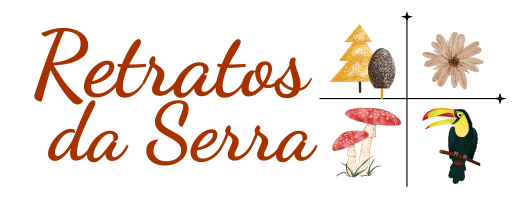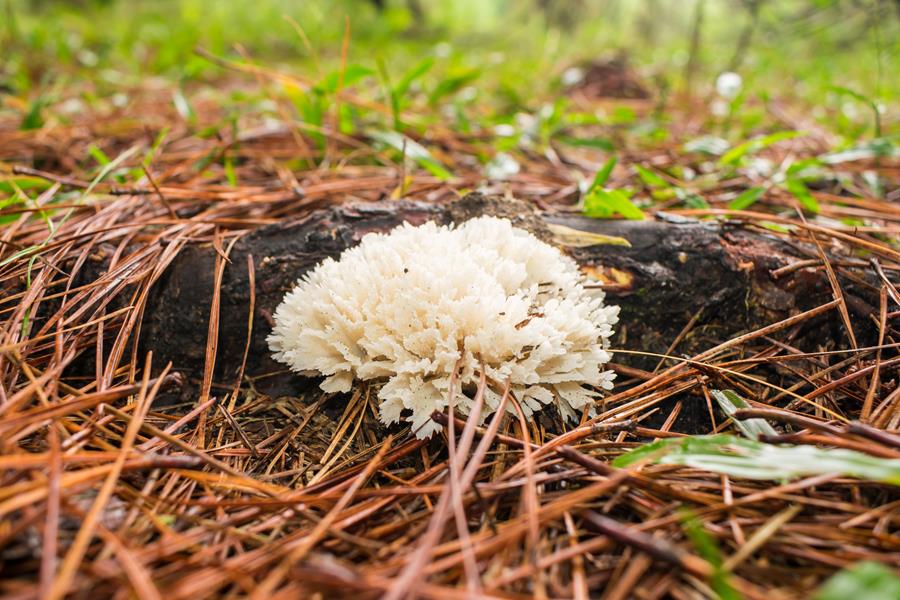An encounter with three specimens of Irpex rosettiformis, a wild edible fungus. They were in two different areas; two growing on some decaying trunks already well buried in an area with exotic pine (Pinus sp.), and another inside an Araucaria moist forest (Mixed ombrophilous forest), also growing on wood.
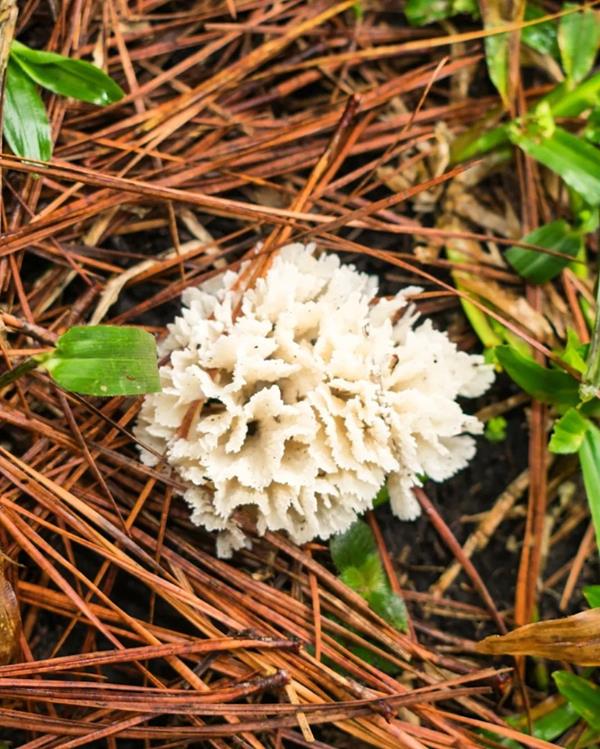
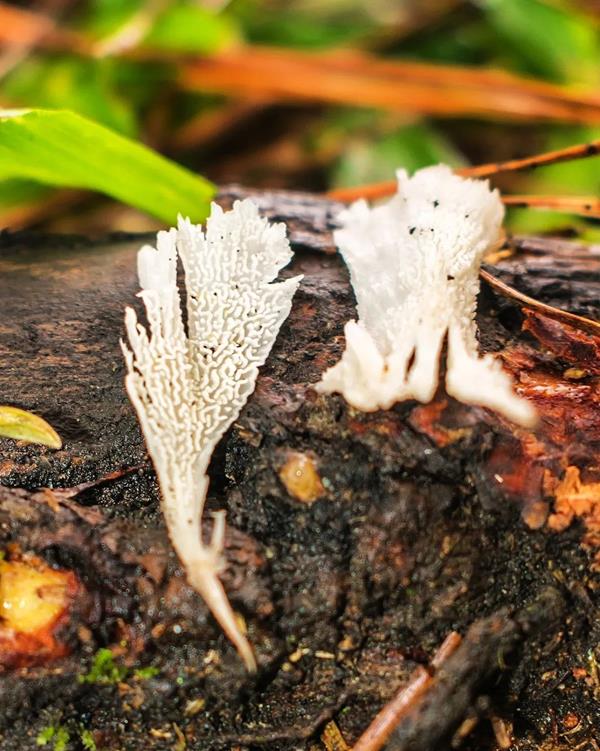
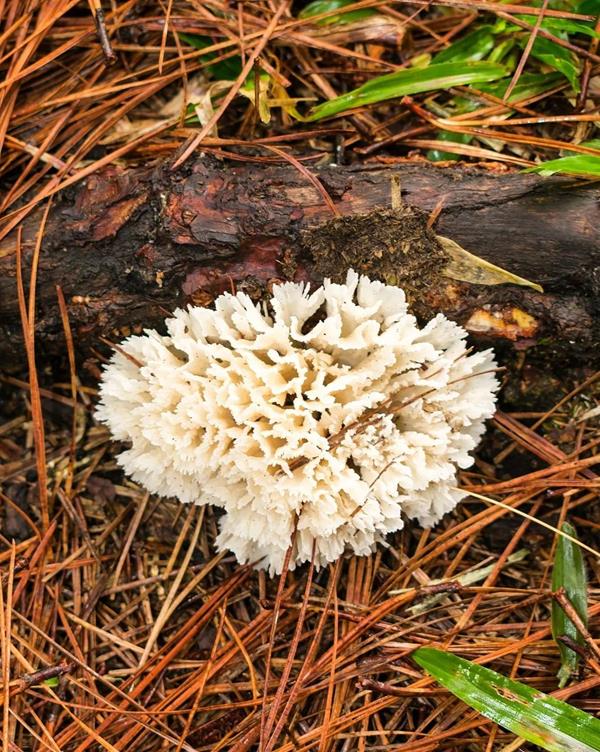
Known in English as Poretooth Rosette, in the past it was also known by another scientific name, Hydnopolyporus fimbriatus. It usually looks a bit like a flower with small petals.
But I saw that they don’t always have this shape. This one I found in the woods (photo below) had its “petals” spread out without forming a rosette, for example.
The hymenophore (underside) has structures that look like little “thorns”, which are very interesting. Although this species is edible I haven’t tried it yet. This was the first time we found so many specimens and I was able to be more certain of the identification, which I later also got confirmation from an expert on iNaturalist.
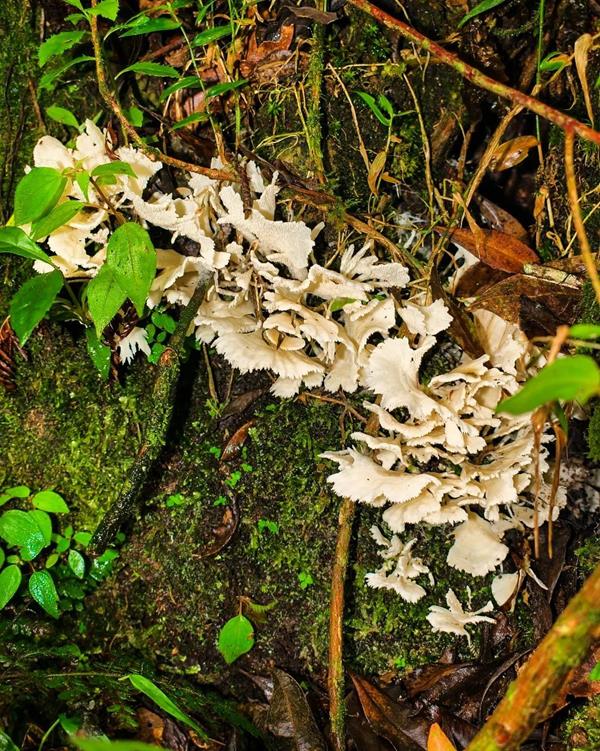
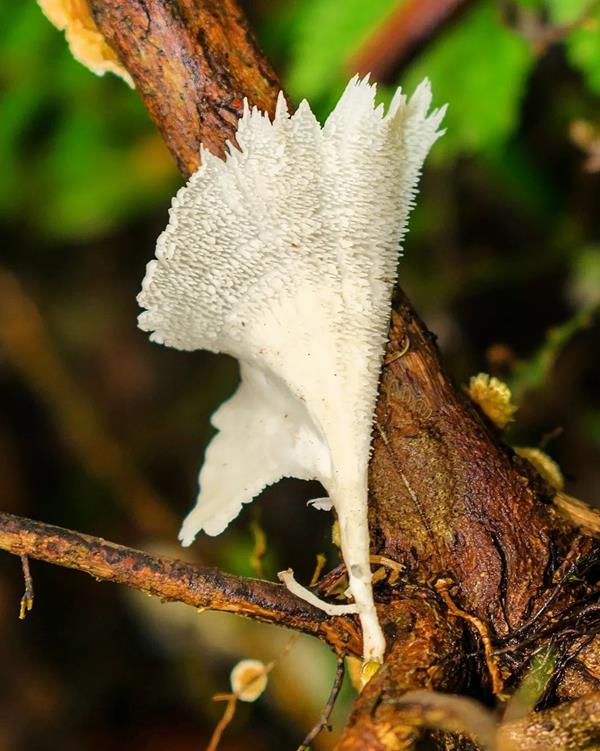
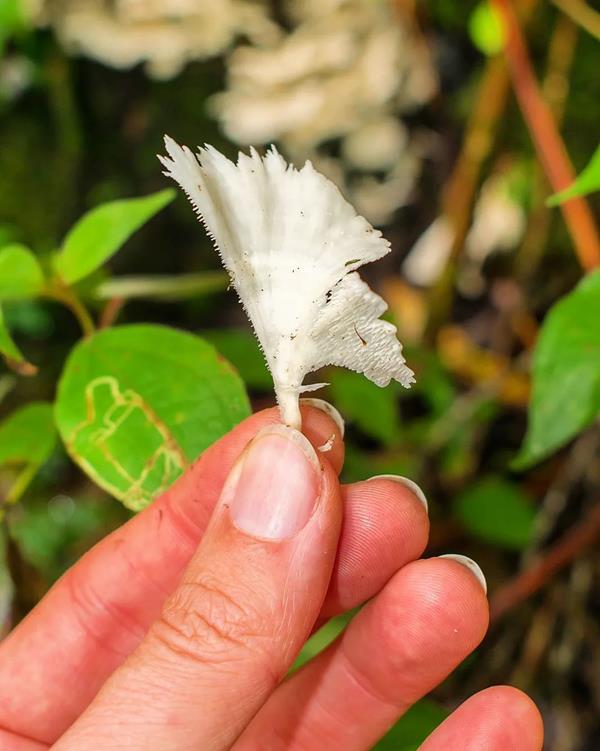
It’s a fungus that’s not usually very big. This larger “rosette” should be about 8 cm in diameter, and the individual petals are very small, as you can see in the photos where I’m holding one in my hand (about 3 cm in height and width). So I don’t know how interesting it is to make a meal, except if you find a lot of it. They don’t seem to be very common around here, but I hope to at least be able to try them one day.
Trying the wild edible fungus Irpex rosettiformis
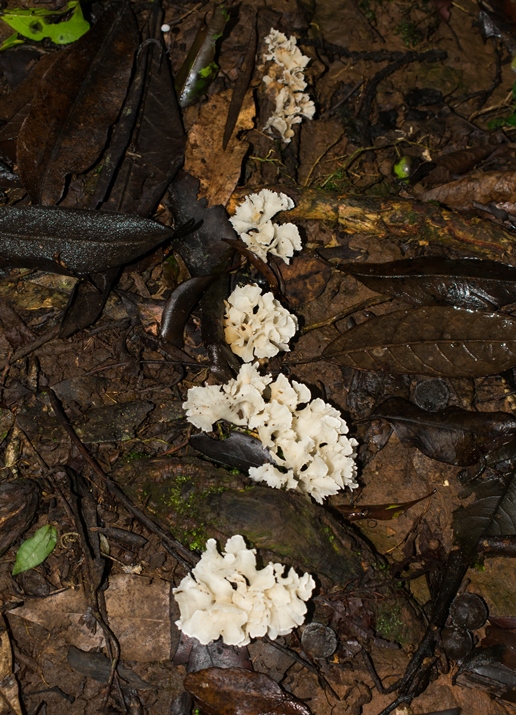
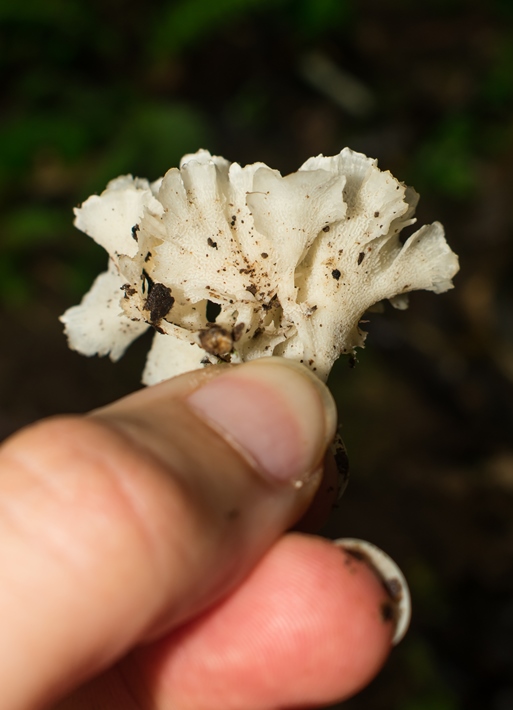
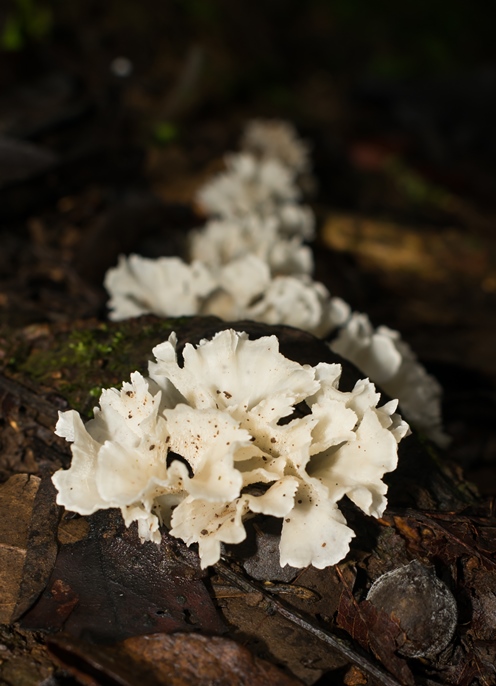
An update: in January and February of 2025 we found a lot of them, and we were able to collect a good amount to finally try!
They are a pain to clean, a lot of dirt and debris gets stuck, especially when they are growing on wood very close to the ground, like many of the ones we found. But at least it is a fungus that can be rinsed without losing its texture, which is very firm. Also, when they are a little older they become a bit harder and more fibrous.
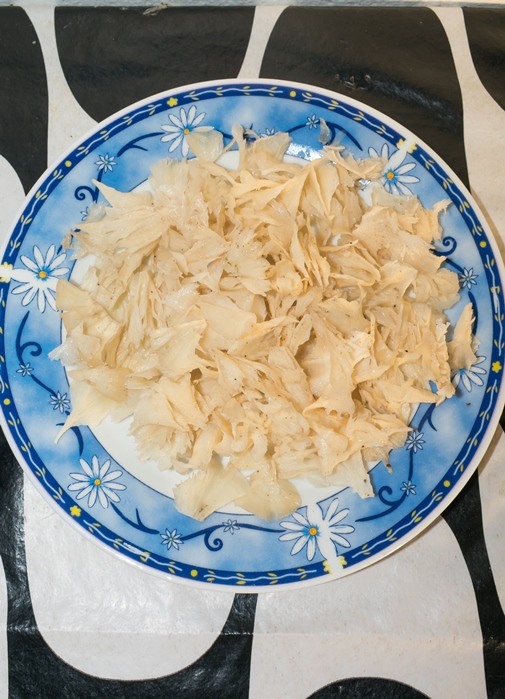
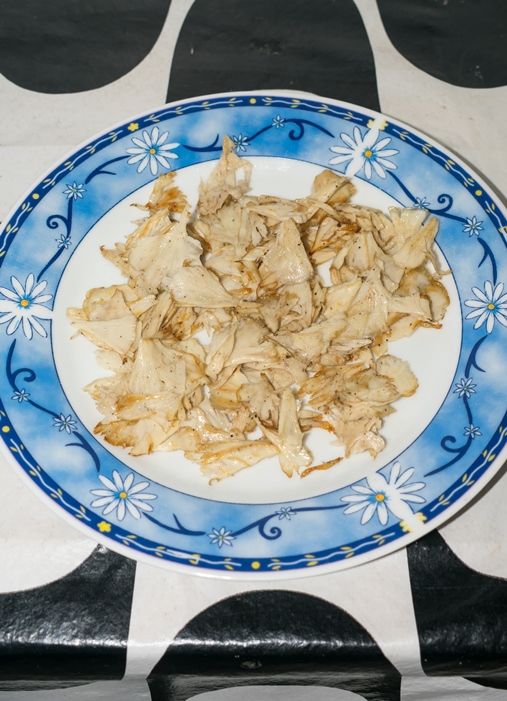
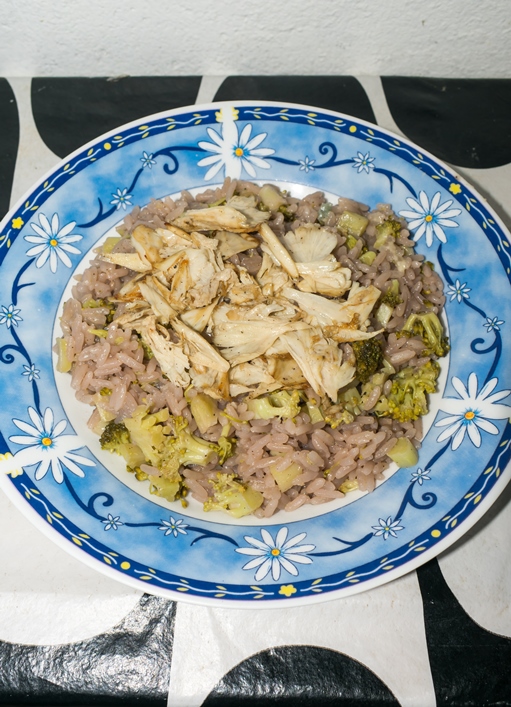
First, we tried just a little bit, since it was the first time we were eating this mushroom. The next day, we made the rest, fried/sauteed them in a frying pan with just a little oil, salt and black pepper, and ate them with rice, broccoli and gorgonzola.
We found them very tasty! The taste reminded us a little of the Pleurotus albidus that is quite common here. A few days later, we found more and made them again. These were a little more fibrous, you have to chew them well, but nothing that makes the experience unpleasant. Another edible fungus tried and approved!
⚠ Remember to never eat wild mushrooms without proper identification.
📸 Pictures made in São Francisco de Paula, Rio Grande do Sul (Serra Gaúcha, South of Brazil).
